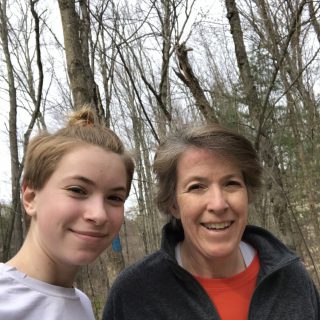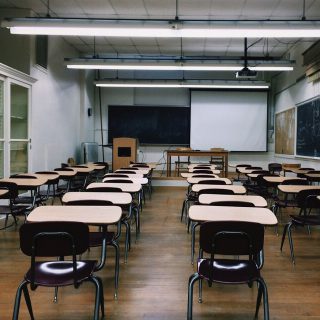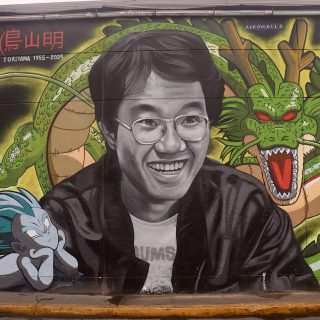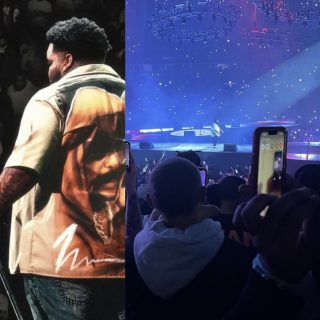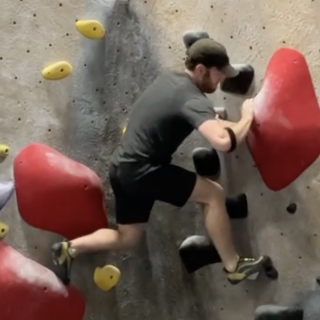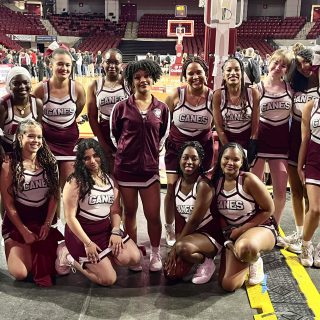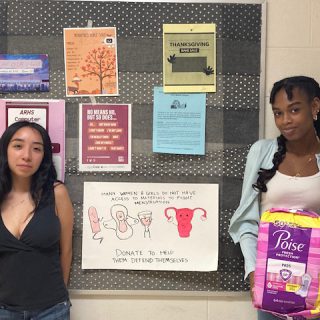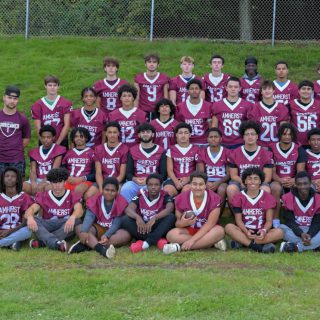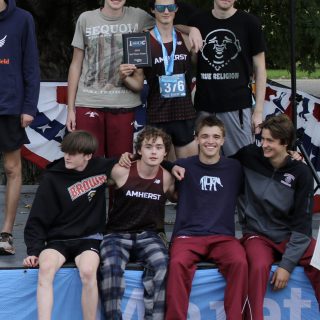Upcycling Club: a passion for sustainable fashion
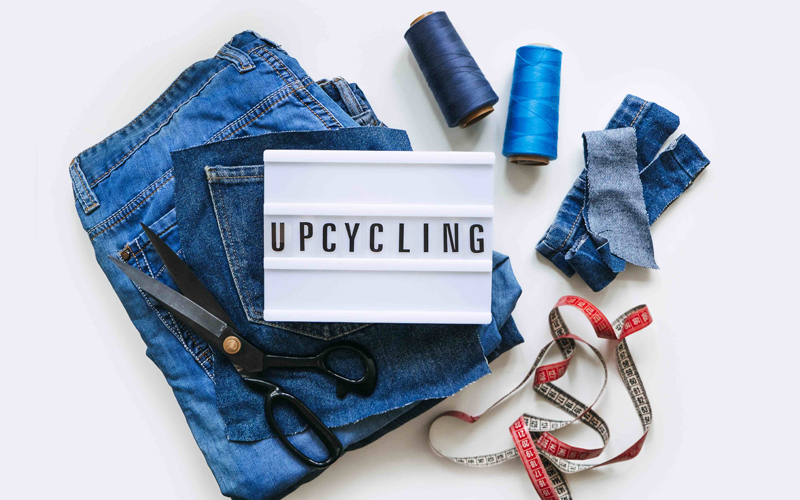
Every Wednesday and Thursday afternoon during flex block, in room 119, you can find the ARHS Upcycling Club. Walking into the room, which normally serves as the Fiber Arts classroom, you are immediately met with boxes of various fabric scraps piled against the walls, students hunched over whirring sewing machines, bins of old clothes that have been donated to the club, and tons of colorful, organized chaos.
ARHS seniors Maeve Hogan and Elizabeth MacLeod always enjoyed thrift shopping and making new clothes out of the pieces they thrifted. They started the Upcycling Club in their junior year in order to share their passion for fashion and sustainability with their peers. Since then, the Upcycling Club has grown considerably, with donations of old clothes constantly flooding in and students of all ages bringing in their unique thrift store finds to cut, sew, and make their own.
“I first became interested in upcycling when I would go through my mom’s closet and take her old clothes,” said club vice president and co-founder MacLeod. “I would do things like cutting the arms off of a shirt and turning it into a skirt, or safety-pinning a scarf to function as a shirt. It’s awesome to create a piece you love that’s completely one of a kind and unique to you.”
Upcycling is defined as “reusing discarded objects or materials in such a way as to create a product of higher quality or value than the original.” It’s a way that everyone can be involved in preserving the environment and create something meaningful at the same time
A driving force behind the Upcycling Club is environmental sustainability. Roughly 1.92 million tons of textile waste is produced globally each year and is predicted to rise to over 100 million tons by the end of the decade.
In the future, the Upcycling Club hopes to start an “in-school thrift shop” said club president and co-founder Hogan. Students could bring their old clothes and sell their upcycled pieces to benefit the club, in order to fund field trips and essential materials like new sewing machines. They know making money from their upcycling ventures is a possibility because there are already students in the club who do so. “There’s a bunch of people who sell their pieces on Depop,” said MacLeod. Depop is a social media platform used to buy and sell secondhand clothing.
High school can be a place where it feels like you always need to have the newest fashion trend in order to fit in. MacLeod and Hogan are working to make ARHS a community where sustainability and creativity are valued over fast fashion trends, and where students can share their creativity in a way that benefits the environment.
